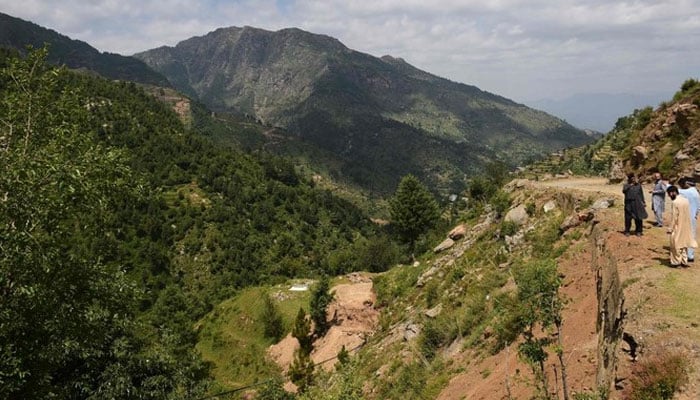ISLAMABAD According to study by the Pakistan Institute of Development Economics (PIDE), Pakistan has lost over 20% of its forest acreage in the last 24 years as a result of increased urbanization and energy scarcity. The News revealed this information.
According to PIDE, with approximately 27,000 hectares of forest removal each year, Pakistan has the lowest rate of forestation in the world in its most recent study, “Challenges and Opportunities of The Billion Tree Tsunami Project (TBTTP)”. The study found that Bangladesh and Pakistan have the largest percentages of private forest land ownership in South Asia—36% and 34%, respectively.
Khyber Pakhtunkhwa province has Pakistan’s largest forest area, followed by Sindh, Punjab, ex-Fata, Balochistan, Azad Jammu and Kashmir, and Gilgit Baltistan (GB), in that order.
According to the study, the primary causes of deforestation in Pakistan include the country’s rapidly expanding population, growing urbanization, extreme poverty, and lack of energy sources like gas.
Furthermore, the study shows that the development of extensive road systems for individual mobility and infrastructure in cities like Lahore and Islamabad has negatively impacted forestation. Pakistan has less than one billion trees, making it one of the nations with the fewest amounts of trees worldwide.
Pakistan has just five trees per person and 1,131 trees per sq km (more than Afghanistan in South Asia). According to study, 900 trees per person are needed for sustainable development.
The largest totals are found in the nations with the largest landmasses. Russia is the country with the most (642 billion).
The US (228 billion) and Brazil (302 billion). Pakistan has less than one billion trees, making it one of the nations with the fewest amounts of trees worldwide.
Pakistan’s overall forest area has shrunk by 20% since 2000. In 2021, the percentage of Pakistan’s land area covered by forests was 4.8% (36.9 sq km) out of a total land area of 770.8 sq km, while in 2000 it was 5.9% (45.1 sq km). Pakistan clears over 27,000 hectares of forest annually, of which half are utilized for cooking and heating in homes without access to gas.
Pakistan’s forest cover is substantially less than the global average of 31.2%, which is higher than the values of 18.9% in South Asia, 24.4% in India, and 14.5% in Bangladesh.
According to PIDE research, “a country should ideally have 25% forest cover for a healthy environment.”
The country’s total forest acreage is distributed differently, with Khyber Pakhtunkhwa accounting for the largest portion at 32.7%. Other regions with higher percentages include Sindh (14.8%), Punjab (12.4%), Ex-Fata (11.9%), Balochistan (11.1%), Azad Jammu and Kashmir (9.6%), and Gilgit-Baltistan (7%).
According to research, “dry temperate forests account for the largest share of the country’s forest cover area, accounting for 36% of it. Sub-tropical broadleaved shrubs (19%), moist temperate forests (15%), Chir Pine forests (13%), Riverine (4%), irrigated plantations (4%), thorn (3%), mangrove (3%) and subalpine forests (2%) are the next most common forest cover types.
Furthermore, as per PIDE’s study, because of the swift increase in population, increased urbanization, extreme poverty, and energy scarcity, the pace of forestation has decreased.
Large tracts of forest have been cut down by locals and timber mafias. Individuals who lack access to electricity or do not receive it sometimes rely on wood fires for warmth, cooking, and illumination.
It also mentions that there are 11 million hectares of privately owned forests in South Asia, and that number is growing. The largest percentage of privately owned woods are in Pakistan and Bangladesh (36% and 34%, respectively, in 2010). Future sustainable forest management may be seriously impacted by a rise in the percentage of privately owned woods.
Among all forest ownership groups, indigenous people own the least, and their share is decreasing. This could have detrimental effects on indigenous people’s empowerment as well as forest conservation.







